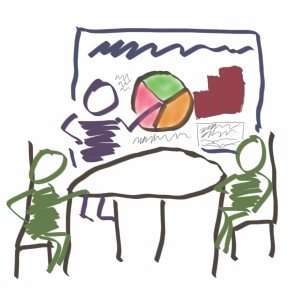 You’ve spent the last 3 days putting together the deck for the workshop – speaking to the participants to get their input, collating, reviewing, updating and formatting.
You’ve spent the last 3 days putting together the deck for the workshop – speaking to the participants to get their input, collating, reviewing, updating and formatting.
Why?
So that we use the time in the workshop in the most efficient possible way.
Right?
Wrong.
A beautifully collated and presented deck is perfectly suited to use in a presentation – so we make the assumption that we should be creating one for a workshop as well.
What’s the Problem?
The problem is that the purpose of a workshop is to do some work – to identify issues, solve problems and get creative. If we start the session with a presentation deck, the participants will immediately focus on the presented content and not move very far from it. We might get some suggestions to fix the spelling, grammar or re-word a sentence – the focus will be on polishing the deck – not generating new content.
It can be a lot more useful to start with a ‘template’ type of deck which reflects the outcomes desired from the workshop and fill it in as the workshop progresses.
Even a template can act as a framing or anchoring bias and restrict the range of thinking – so if we are after innovation, it can be a problem.
So don’t try to get things perfect first time – allow for inputs, ideas and refinement – these things take time. If we do not allow the time, we miss opportunities for innovation and the quality that comes from stepping away and revisiting/reworking a piece later on.
